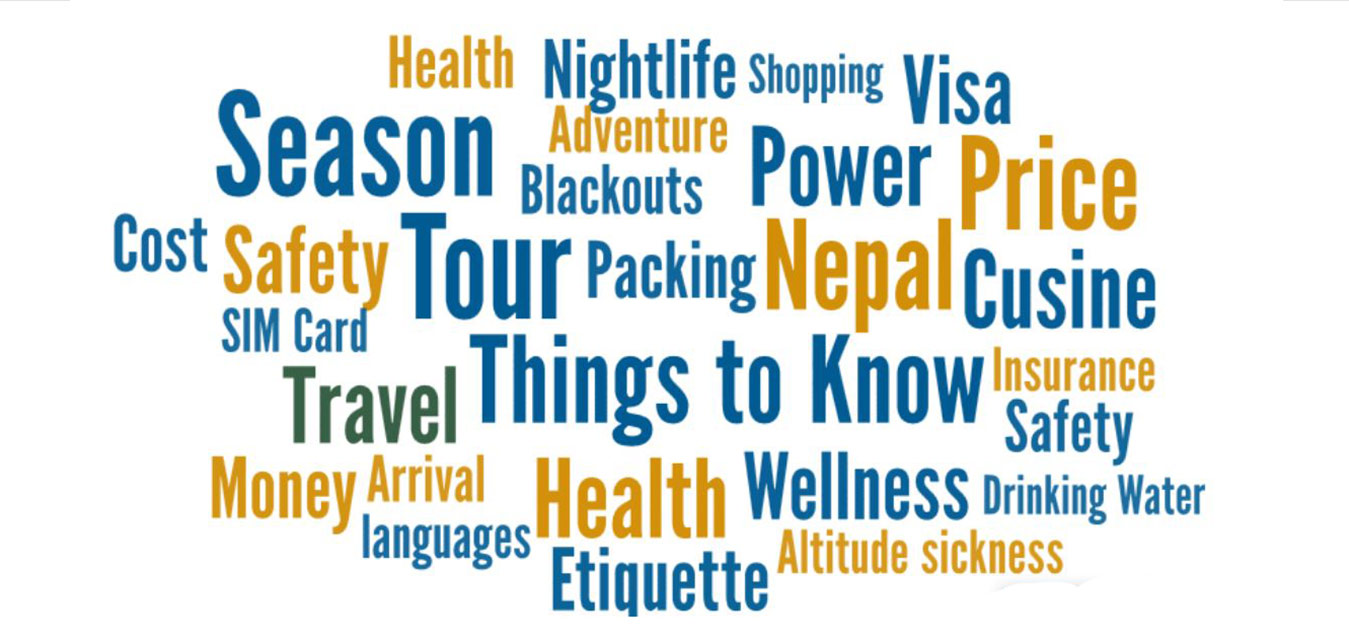
Named a top travel destination by Lonely Planet, Nepal truly has something for everyone.
From trekking in the Himalayas to extreme sports for adrenaline- junkies such as rafting, paragliding, and jungle wildlife tours, to the rich culture, art, and architecture of the country, the reasons to travel to Nepal are endless—as diverse as the adventures one can experience there.
Here are some recommendations to consider before traveling to Nepal or convincing reasons to come visit the birthplace of Lord Buddha.
The times to travel in Nepal heavily revolve around its summer monsoon season.
The peak season is autumn—from late September to late November—when the weather is clear and dry, the mountains visible, and the temperatures moderate, but that does mean higher prices for trekking tours, more people, and more packed travel routes.
Religious and cultural events, however, occur all year round [link to Gai Jatra festival pictures when it’s up.] Hooray!
While you can haggle, as you should, in cities like Kathmandu and Pokhara set up for tourists as starting points for the rest of their travels in Nepal, things can get pricey. From entrance fees to temples to guided treks, just be aware that because this a popular travel destination for adventurists, tours are not cheap.
Even the tourist visa to enter was recently increased. Outside of the main cities of course will be less expensive and affordable, but price comparison is essential as well as doing your research beforehand to budget accordingly and to get the best deals.
Other than the potential travelers’ diarrhea and food poisoning one can get while eating abroad, Kathmandu is ranked as one of the top cities in the world for the worst air pollution.
While the air quality can affect everyone, if you have allergies or are prone to sinus infections and asthma, bring allergy medications along with travel antibiotics. And wearing a mask when you are walking down the dusty streets, while albeit uncomfortable, can help prevent the inhalation of those pesky irritants.
However, should you be struck down by any illness, pharmacies are around town and you do not need a doctor’s prescription to purchase medication.
Altitude sickness is also a pressing issue for trekkers. Drink plenty of fluids, ascend slowly, wear appropriate clothing, have the proper medication, never hike alone, and be aware of the signs and symptoms.
In short: don’t drink the tap water, eat cooked food, bring toilet paper with you when going to the bathroom outside of the main cities, have travel antibiotics and other medications with you, wear a mask for the pollution if you need to, listen to and take of your body, and enjoy.
Not to generalize or compare, but as a woman, I have felt way more safe as a solo-female traveler here than I ever did in India—with women as well as men navigating and working in public spaces more equitably, but not necessarily equally.
While sexual harassment is considered uncommon, it still very much exists, especially verbally. Since sadly for us, safety is never a given, take the usual precautions but worry less not more here in Nepal.
Power outages are a pretty regular happenstance in Kathmandu. But do not be alarmed: most businesses operate with a backup generator and usually, the power comes back on anywhere between a few minutes to a few hours, but no longer.
If Internet access is essential to you, buying a SIM Card for a month of data is quite painless of an expense, and you can purchase one at the airport or in town.
Ncell is the most well-known plan, and you can always top-up for more data at most local convenience stores should you run out of data. If there is anything else you need that might run on batteries and electricity, charge your gear with this in mind.
While I’ve always wanted to go to Nepal to be engrossed in its glorious mountain energy, the reason why I came this summer is to pursue my yoga teacher training.
Nepal is rife with opportunities for training and certifications as well as health and wellness classes such as Tibetan Singing Bowl workshops, Reiki healing, and Ayurvedic courses.
I even took barista courses here in Kathmandu at Himalayan Java Barista School, although I will still be needing some practice for sure!
While most travel websites and trip advisories emphasize avoiding drinking tap water unless it’s been bottled or boiled and abstaining from raw vegetables and pre-cut fruit unless it’s been cooked, I’m here to let you know that Nepal is a vegetarian’s paradise!
From the delicious local Momos (a type of dumpling; there are many kinds) to the variety of Nepalese curries, Kathmandu, Pokhara, and even trekking routes are not without their veggie options. Even my favorite haunt, Himalayan Java Coffee, has soymilk as an alternative for its drinks. Checkmate!
I found the travelers and ex-pats here to be laid-back and down-to-earth, and if you want to socialize with locals and tourists alike, in Kathmandu, there is booming nightlife.
With a plethora of pubs, bars, lounges, and clubs, for some good dancing music, I’d recommend Lord of the Drinks and Buddha Bar. While the clubs can get kind of crowded and dominated by men, I went with a group and we had a local friend as a guide.
Go with a group to protect yourself from the grabby men, have fun, and dance the night away. Just be careful about pickpocketing—our umbrellas and one of the girl’s jackets were stolen at the coat check; luckily it was nothing more.
As a final note to prospective travelers, take heed of cultural etiquette, learn some colloquial phrases like how to say hello and thank you (Namaskar and Dhanyavad respectively), and just be a good, well-behaved tourist—not another entitled, colonial voyeur. Remember the purpose and privilege of traveling in the first place.
Namaste!
Sasha Kruger
Comment Reply
Leave Your Comment